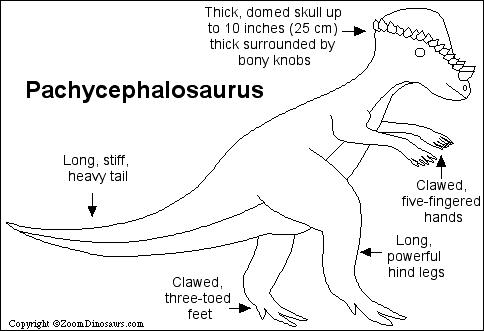
 |
| More about Pachycephalosaurus Dinosaur Printouts |
AllAboutDinosaurs.com Pachycephalosaurus |
Animal Printouts |


Anatomy: Pachycephalosaurus was a dome-headed dinosaur. Its huge head housed an incredibly thick skull, a tiny brain, and large eyes. Its rounded skull was up to 10 inches thick (25 cm).
Pachycephalosaurus grew to be about 15 feet long (4.6 m) and may have weighed roughly 950 pounds (430 kg). Pachycephalosaurus probably had a good sense of smell. It had bumpy knobs on its snout and along the rear of its skull. This dinosaur had short forelimbs and a stiff tail (which had a distinctive mesh of interwoven tendons surrounding its rear portion).
Fossils and Name: Pachycephalosaurus means "Thick-Headed Lizard." Pachycephalosaurus was discovered in 1938 by William Winkley on the family ranch outside of Ekalaka, Montana, USA. It was named Pachycephalosaurus in 1943 by Barnum Brown and Erich M. Schlaikjer. Although complete fossils are rare, many thick skull fragments have been found. Pachycephalosaurus and other pachycephalosaur fossils have been found in Alberta, Canada, the western United States, the Isle of Wight, Mongolia and Madagascar.
| Search the Enchanted Learning website for: |